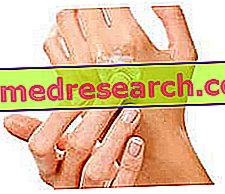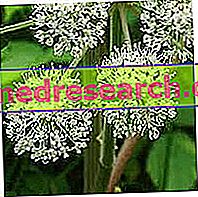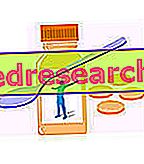Definition
One speaks of hypertension when the values of minimum arterial pressure (diastolic) exceed 90 mmHg and those of maximum arterial pressure (systolic) exceed 140 mmHg; this definition is not completely correct, given that, to define itself as "hypertensive", a subject must maintain this alteration of blood pressure values in a constant manner.
Causes
In essential arterial hypertension, the precise causes at the origin of the hypertensive picture are not well defined; rather, it is possible to hypothesize only predisposing factors: unbalanced diet, advanced age, genetic predisposition, a sedentary lifestyle, stress, etc. In secondary hypertension, the causes are more evident: excessive NSAID / cortisone intake, endocrine and renal dysfunction, pheochromocytoma, hyperthyroidism, occlusion of a renal artery, Cushing's syndrome.
- Risk factors: alcohol and smoking abuse, advanced age, obesity / overweight, a sedentary lifestyle, stress
Symptoms
In most cases, hypertension does not begin with any definite and precise symptom, therefore the disorder tends to be diagnosed late; however, the possible symptoms may result in: impaired vision, confusion, acute headache, nausea, ringing in the ears (tinnitus), nose bleeds, dizziness, vomiting.
Diet and Nutrition
Natural Care
Information on Hypertension - Drugs for the Treatment of Hypertension are not intended to replace the direct relationship between health professional and patient. Always consult your doctor and / or specialist before taking Hypertension - Hypertension Medications.
drugs
The main goal of antihypertensive treatment is to reduce blood pressure to reduce the risk of complications; the change in lifestyle, the food devices and the implementation of some simple physical exercises contribute to maintaining blood pressure in the range of physiological levels.
General guidelines for blood pressure control:
Follow a healthy and regular diet, rich in potassium and fiber, and low in salt and saturated fat
Drink a lot of water
Not smoking
Practice at least 30 minutes of exercise a day
Don't drink alcohol
Reduce stress
In case of overweight / obesity, follow a hypocaloric diet
If these simple dietary and behavioral measures were not sufficient to balance the arterial pressure values, the patient will have to follow a pharmacological path aimed at treating hypertension. Very often, hypertension must take drugs for life.
The medicines used in therapy for the treatment of hypertension are diuretics, calcium channel blockers, sympatholytic drugs, beta blockers, angiotensin II antagonists, ACE inhibitors.
Thiazide diuretics : these drugs act at the nephron level, increasing the amount of ultrafiltrate, which is excreted in the urine; in other words, diuretics block the reabsorption mechanisms of water and sodium, acting at the level of the distal tubule. As a result, the volume of blood reaching the heart decreases, as does cardiac output, peripheral resistance and blood pressure.
Thiazides are widely used in therapy for the treatment of hypertension.
Thiazide diuretics cause an electrolyte imbalance, especially in terms of potassium; in this case, an integration of this important mineral is recommended.
- Hydrochlorothiazide (eg Rasitrio, Esidrex): start therapy for hypertension by taking a dose of 25 mg once a day. Maintenance dose: it is possible to increase the dosage of 50 mg, to be taken orally, also divided into two doses. Consult your doctor.
- Amiloride hydrochloride + hydrochlorothiazide (eg Moduretic): amiloride is often formulated in combination with potassium-sparing drugs (hydrochlorothiazide). Indicated to treat edema caused by cardiac and hepatic disorders and for the treatment of hypertension. It is recommended to take 1-2 tablets of medicine per day (1 tablet: 5mg of amiloride + 50mg of hydrochlorothiazide); do not exceed 4 tablets per day.
Loop diuretics : as the word itself predicts, the site of action of these drugs is the loop of Henle: the actives carry out their therapeutic activity preventing the transport of chlorine and sodium in the ascending tract of the loop, so it is less water reabsorption. These drugs increase the excretion of calcium, magnesium and potassium. They are indicated in case of hypertensive crisis and edema.
- Ethacrinic acid (eg. Reomax): in general, the drug is prescribed to treat diseases characterized by an evident increase in water retention, cirrhosis, ascites, chronic renal failure and hypertension. As an indication, it is recommended to take the drug at a dose of 50 mg, once a day, after a meal. Consult your doctor.
Potassium-sparing diuretics : they represent the only type of diuretics able to avoid the loss of potassium (hypopotassemia). These medicines carry out their therapeutic activity at the level of the collecting duct: by antagonizing the function of aldosterone, they reduce the absorption of sodium and water, favoring diuresis.
- Amiloride (eg Moduretic, associated with hydrochlorothiazide): Tablets formulated with 5mg of amiloride + 50mg of hydrochlorothiazide are available: it is recommended to take 1-2 tablets a day for the treatment of hypertension. Do not exceed 4 tablets per day.
- Furosemide (eg Lasix, Spirofur, Fluss): for the treatment of hypertension, it is recommended to take 1 to 3 tablets of 25 mg per day, depending on the severity of the condition.
- Spironolactone (eg Aldactone, Uractone, Spirolang): the dosage for the treatment of hypertension is very variable (50-200 mg a day) and must be established by the doctor on the basis of the patient's blood pressure.
Diuretics carbonic anhydrase inhibitors : carbonic anhydrase is an enzyme located in the kidneys and eyes that, when inhibited, prevents bicarbonate reabsorption in the proximal convoluted tubule.
- Acetazolamide (eg Diamox): the dose for the treatment of hypertension must be accurately determined by the doctor based on the patient's state of health.
Osmotic diuretics : they increase the volume of urine excreted by acting in every point of the renal tubule: recalling water, they reduce the reabsorption of the same. Also indicated for the treatment of intraocular hypertension.
- Mannitol (eg Osmohale, Man10% BIN, Isotol): indicatively, mannitol should be taken at a dose varying from 50 to 200 g per day. It should generally be given intravenously; before proceeding with the dosage just described, the patient is usually subjected to a drug test-dose, in which 200 mg / kg of active are administered for slow intravenous infusion. The precise dose depends on the severity of the condition and the general state of health of the patient.
Beta-blockers : decrease sympathetic tone by blocking beta receptors at the heart level. In other words, these active ingredients are indicated for the treatment of hypertension, reducing both the force of contraction and the heart rate.
- Atenolol (eg Atenol, Tenoretic, Tenormin): for the treatment of arterial hypertension of renal origin, it is recommended to take 100 mg of active ingredient a day. After 15 days of treatment, the patient should start getting the first benefits; if this were not the case, it is possible to associate a diuretic drug with beta blockers.
- Acebutolol hydrochloride (eg Prent, Sectral): for the treatment of arterial hypertension, take 1 tablet of 200 mg of drug, preferably before breakfast. It is possible to gradually increase the dosage up to a maximum of 400 mg per day.
- Timolol maleate (eg. Blocadren, Cusimolol, Ialutim): indicatively, for the treatment of arterial hypertension, take 10mg of active twice a day.
- Nebivolol (eg Lobivon, Nebilox, Lobidiur): to treat hypertension, take 5 mg of active per day, about always at the same time. Consult your doctor.
- Propanolol hydrochloride (eg Inderal): for the long-term treatment of hypertension, it is recommended to take 40 mg of active, twice a day.
- Bisoprolol emifumarato (ex. Concor): for the treatment of hypertension and angina pectoris, it is recommended to take 5-10 mg of active per day. The dose can be changed based on the severity of the disease and the patient's response. Consult your doctor.
- Metoprolol tartrate (eg Seloken, Lopresor, Metoprolol AGE): take 1-2 tablets of 100 mg, 1-2 times a day. The dosage just described is approximate: consult your doctor.
- Carvedilol (eg Colver): take two tablets a day (for a total of 12.5 mg) during the first two days of treatment for hypertension; then, take 25 mg of active, in a single dose, up to a maximum of 50 mg (divided into two doses). Consult your doctor.
- Pindolol (eg. Visken): indicatively, take ½ or 1 tablet, three times a day, up to a maximum of 4 tablets per day. Each tablet consists of 5 mg of active.
ACE Inhibitors : these drugs act by inhibiting the enzyme Angiotensin I-converting enzyme (ACE), which converts angiotensin 1 into its active form (angiotensin 2), responsible for the release of aldosterone, vasoconstriction and stimulation of the sympathetic system.
ACE inhibitors are powerful antihypertensives:
- Ramipril (eg. Triatec, Unipril, Eclipse): take two tablets (for a total of 2.5 mg) per day; subsequently, it is possible to increase the dose slowly (generally every 2 weeks) up to a maximum of 10 mg / day.
- Lisinopril (eg. Zestril, Ensor, Nosilix): for the treatment of hypertension, it is recommended to take 5-10 mg per day; after 2-3 weeks of treatment, the dose can be doubled. It is recommended to take the tablet every day, approximately always at the same time.
- Enalapril maleate (Ex. Converten): for the treatment of hypertension, this drug is often used in combination with other antihypertensive drugs (eg hydrochlorothiazide); for this purpose, it is recommended to take the drug at a dosage of 5-20 mg, formulated in tablets. However, it is the duty of the physician to establish the most suitable posology for the patient.
- Fosinopril in sodium salt (eg Eliten, Fosicombi, Tensozide): in addition to the treatment of hypertension, this drug is sometimes prescribed for the treatment of heart failure. For high blood pressure, it is recommended to take a dose of 20 mg / day (2 tablets) in a single dose. In general, it is advisable to start therapy with only one tablet and then eventually increase the dose.
ACE inhibitors may cause more or less serious side effects: dry cough, angioneurotic edema, fetopathy and skin rashes.
Sartani or AT-1 antagonists : these are drugs that inhibit angiotensin 2 receptors, responsible for vasoconstriction, aldosterone release and hypertrophy. Do not administer during pregnancy.
- Candesartan (eg. Blopress, Ratacand PLUS, Blopresid): start therapy for hypertension by taking 8 mg of the drug once a day; it is possible to increase the dose every 4 weeks, up to a maximum of 32 mg a day. The maintenance dose is expected to take 8 mg once a day.
- Eprosartan (eg Tevetenz, Tiartan): it is recommended to take 600 mg of the drug once a day. It is possible to increase the dose, after 2-3 weeks of treatment, up to 800 mg, once a day.
- Irbesartan (eg Karvea, Karvezide, Coaprovel, Irbesartan winthrop): start therapy for hypertension with a drug dose of 50-150 mg, taken once a day. Continue therapy with a dose of 150-300 mg once a day.
Unlike ACE inhibitors, sartans do not cause dry cough and decrease angioedema.
Calcium channel blockers : these drugs for the treatment of hypertension act at the level of the vascular smooth muscle: they decrease the entry of calcium ions into the smooth and cardiac muscle cells, consequently there is a relaxation of the musculature and a decrease in peripheral resistance ; in this way, the arterial pressure decreases.
- Nitrendipine (eg Baypress): particularly indicated for treating high blood pressure. It is recommended to start the treatment with 20 mg of drug a day, in the morning after breakfast; it is also possible to take half a tablet twice a day.
- Lercanidipine hydrochloride (eg Cardiovasc, Lisitens, Zanedip): for the treatment of mild or moderate hypertension, it is recommended to take one tablet of 10 mg a day. The dose can be increased up to a maximum of 20 mg a day.
- Felodipine (eg. Prevex, Feloday, Plendil): for the treatment of arterial hypertension, it is recommended to take a dose of drug equal to 10 mg a day, orally. If the drug has a good therapeutic effect, it is possible to halve the dosage. Consult your doctor.
- Amlodipine besilate (eg Norvasc): the dose of 5 mg per day seems to be the most effective to reduce the symptoms related to high blood pressure. Do not exceed 10 mg per day.



